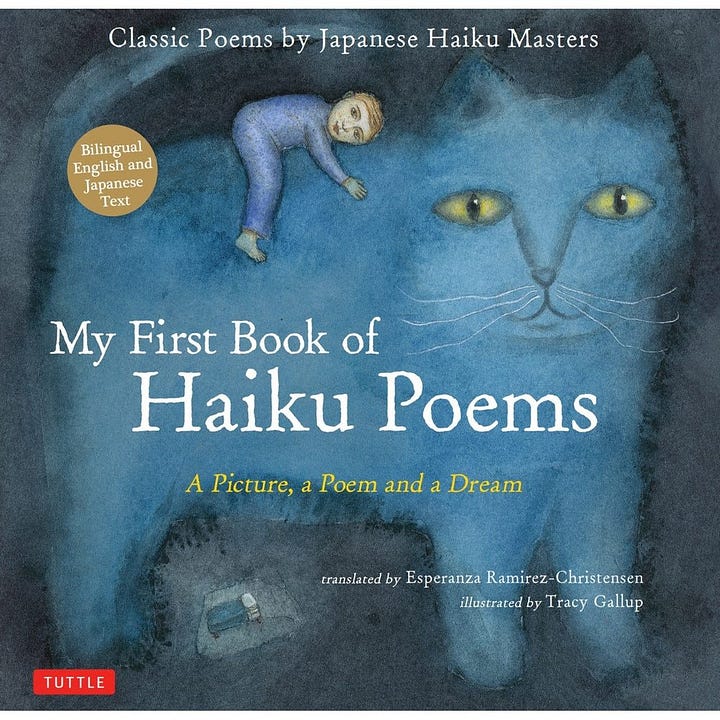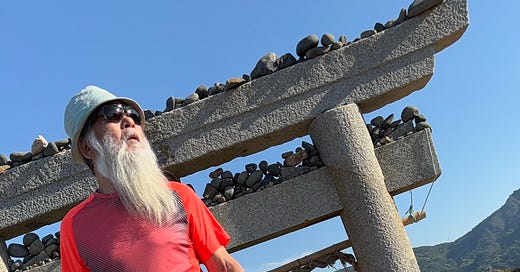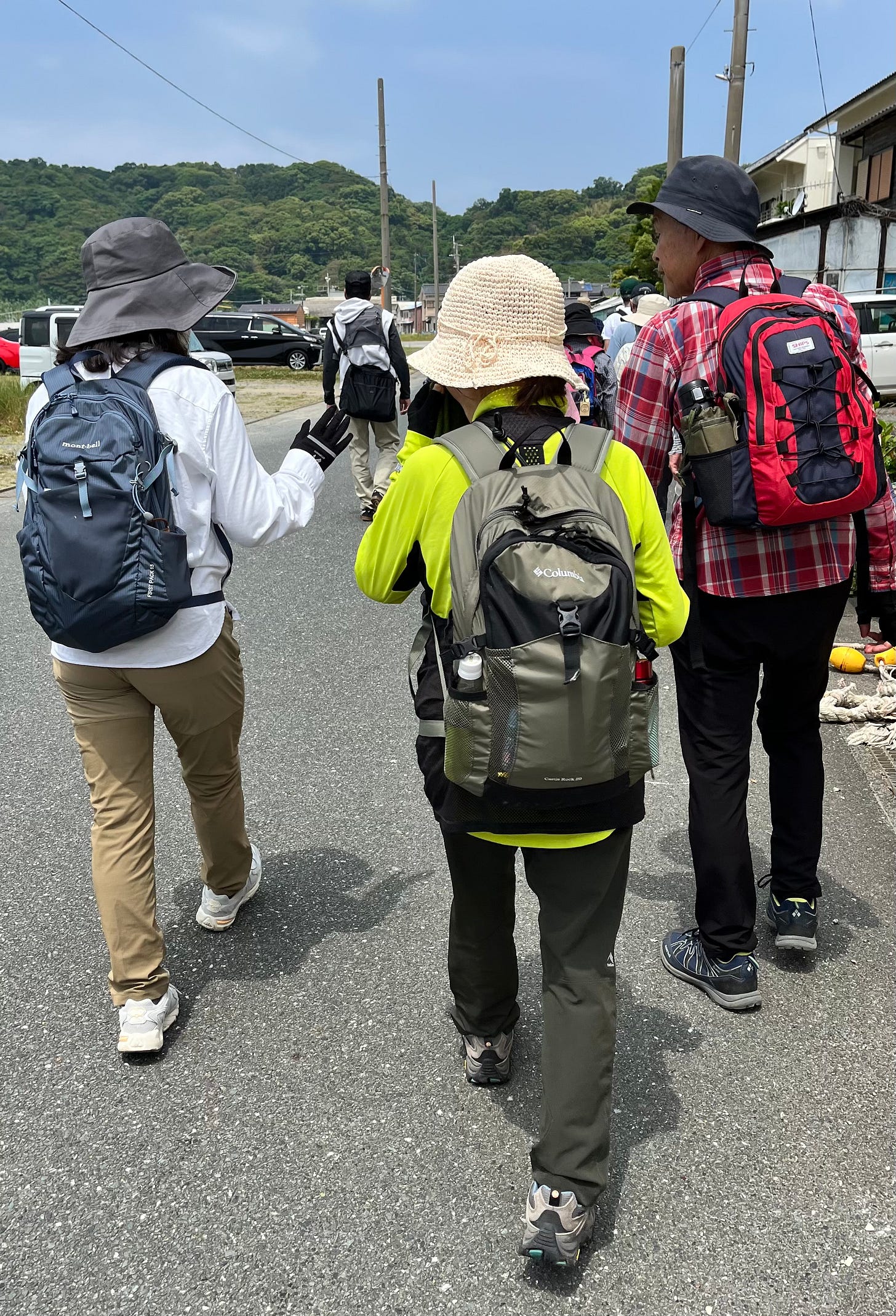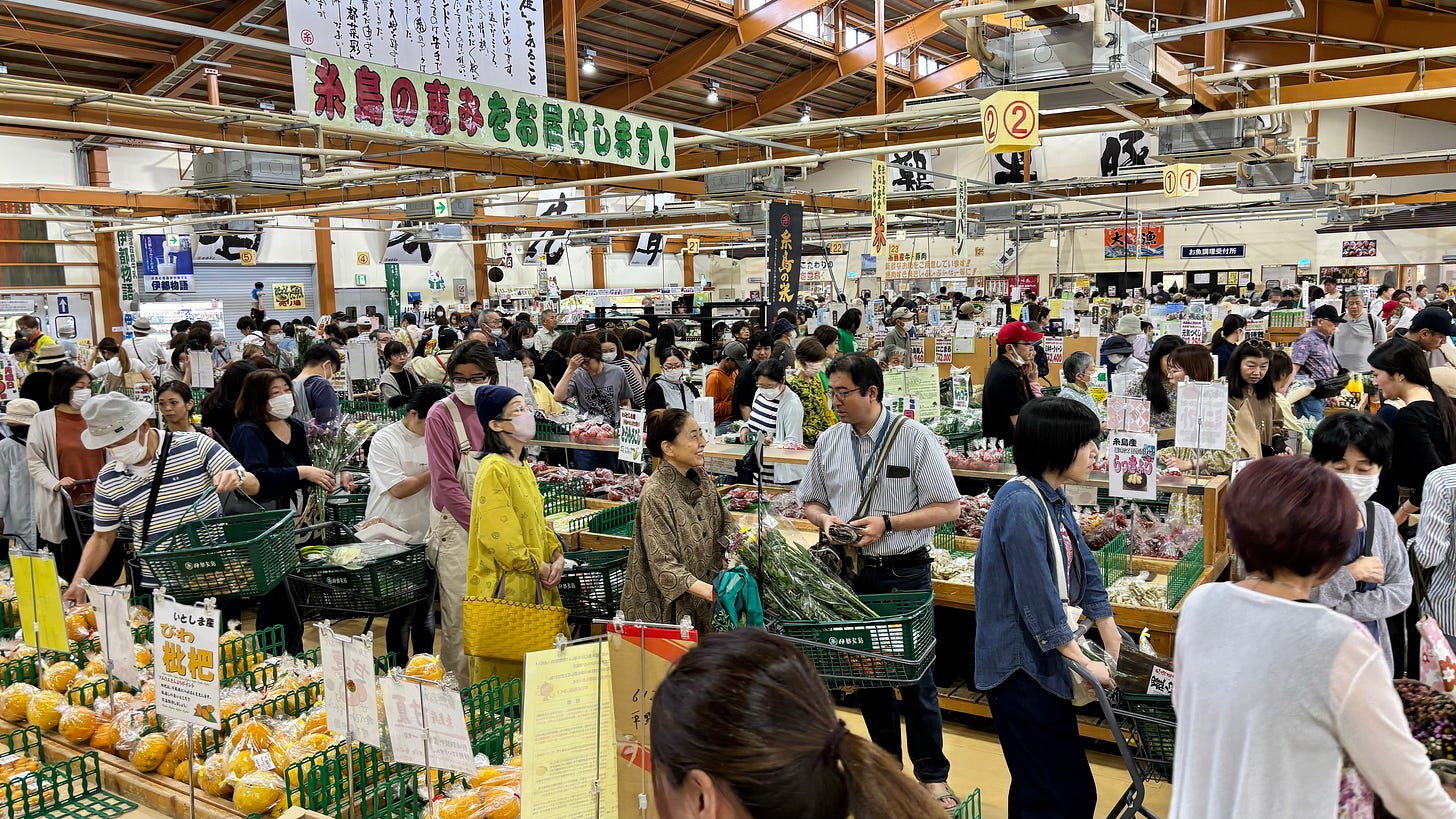The Japanese have fascinated others for ages with their samurai honor and animist shrines, their geisha aesthetics and arcane tea ceremonies. Or more recently, with their cosplay and kawaii culture.
Many Japanologists claim that Japan as an island nation stands apart. It’s supposedly so unique that it can never be understood. I believe each country is unique in its own way. Why would Japan be the only nation to elude our comprehension?
Then again, any statement that begins with “The Japanese” is suspicious. There are many differences between regions, generations, and subcultures. And who the Japanese are will remain forever in flux.
The following photo essay, therefore, is not trying to make general statements about Japan. It’s rather an exploration through 7 meaningful moments that made me pause. Even if I don’t have the whole picture, I can still learn from paying attention to the snapshots that come my way.
Most photos are taken by Daniel; the Western-centric notes from a relative newcomer to Japan are mine.
1. A Cultural Walk
The thirty or so people that show up at 10am for the 5km cultural walk in the Funakoshi fishing port that is my temporary home come prepared as though for a serious hike. They leave no skin exposed to the late May sun; most women even wear special sleeves to protect their hands. I stand out by far more than my blond hair.
From a boombox, modest music flows. One of the guides leads the group calisthenics that is to warm up our bodies before the walk. We stand in the parking lot under the burning sun and lift our arms, rotate our shoulders, twist our backs, and stretch our legs. Most of my co-hikers are a decade (or two or three) older than me, yet nobody has trouble doing the exercises; they’ve done them a million times before, in school or at work.
I think of the teenagers I recently spied on a field, all in the same red gym clothes, how they threw themselves into their game (tug of war), how one whistle from the teacher got both teams to sit on the grass in seconds as though by magic.
One of the guides is so shy that he refuses to speak through the microphone. Another appears so proud of the 1944 covert Japanese war operations that he keeps pointing his yellow flag at the drawing of the military planes, lest we forget the subject of his lecture.
Between sights, a kind woman seeks me out and starts chatting with me in English. An older gentleman shames and stops her: She’s not to speak anything other than Japanese to me. I’ve surely come to learn the language, so she must do her job and speak to me slowly until I understand.
At noon, at the hottest time of the day, the hikers sit down on the shadeless seawall to eat their home-brought bento boxes. Hawks glide down from the sky. The air smells of the seaweed drying in the sun, rich with life’s origins and human history.
2. The Farmers’ Market
The giant store that sells the produce of local farmers and fishermen at very reasonable prices is like a supermarket, with neat isles and fast-moving checkout counters. It’s crowded, as if a storm is coming, everyone arriving at once to stock up. But the store isn’t frenzied. Nobody pushes or yells. We flow between one another like water around stones.
L’enfer c’est les autres, Sartre famously wrote. Hell is other people. But not in Japan. In Japan other people are yasashi: gentle, caring, considerate.
Drivers slow down when they see me on my bicycle and offer me the right away. People who receive a phone call in public walk away from the group and cup a hand over their mouth to muffle the sound of their (already soft) voice. The streets and beaches are litter-free. Many restaurants work on a trust system; once you’re done eating, you walk up to the register, ring a bell, and wait for someone to come and hand you the bill.
I like how I can yield in this society without fearing others will walk all over me. Kindness has an echo here, a resounding chime.
3. Ten People, Ten Colors
Group calisthenics, team spirit, and a high level of consideration for others may signify that Japan centers the individual less than we do in the West. But that doesn’t mean there’s no room for individual expression in Japan.
“Ten people, ten colors,” is a Japanese saying. It means that when you have ten people in a group, chances are you will have ten different opinions.
“Japan’s great accomplishments may be communal, but its treasures are its constantly unexpected and passionate people,” Pico Iyer wrote in his wonderful book, A Beginner’s Guide to Japan.
4. Little Humans
Japan has over 80 thousand shrines and 70 thousand temples. Most Japanese identify as atheist and also visit shrines to greet the gods. They don’t see this as a contradiction and I envy the Japanese for their ability to abandon logic when logic doesn’t fit the world they encounter.
Banana Yoshimoto in Harboiled & Hardluck writes: “There are, without a doubt, places in this world where something has settled, and it's best for us little humans not to get involved.”
5. Fetish



The Japanese are touched by imperfections. They revere the once broken and then mended bowl, the moss growing on stone walls, the sheen of unpolished silver. For them, the process of aging amplifies rather than degrades an object, and shadows are considered more beautiful than light.
Yet a different kind of aesthetics also exists in Japan, potentially adopted from the West. The Japanese revere brand new clothes, unblemished skin, airbrushed photos, and sparkling clean kitchens. They are obsessed with perfection. And their fetish for fashion guides some to match their cars to their homes.
I once laughed at my mother who chose the color of her new car based on the coat she wore most often. I think she would have liked the Japanese sense of style.
6. The London Bus Cafe
Some Japanese lament how younger generations are imitating the West. They want to remain different from the rest of the world and fear that the Japanese are slowly losing their originality. In the past, this mentality inspired rulers to forbid the Japanese from traveling abroad and importing Western books. Its people ought to be protected from the poison of foreign ideas.
But Japan is a global culture now and many people have developed a taste for European and American goods. Here in Itoshima, known for its traditional winter oyster houses, there’s an abundance of hamburger joints, hot dog vendors, ice cream food trucks, croissant bakeries, and vintage stores specialized in USA goods.
Is this sad? I don’t think so. The Japanese have adapted our Western ideas to fit into their own culture and created something new as a result. A London bus placed along a Japanese coast still has a wonderful air of originality.
7. What Do Young Women Dream of?


I read there were once as many geishas across Japan as there are shrines. Nowadays, very few women choose to become a geisha. There are a mere thousand of them left, mostly in Kyoto and Tokyo.
I read birthrates continue to fall in Japan as women are increasingly reluctant to marry and have children. In 2023, the birthrate reached a record low of 1.21 as compared to 1,83 in France and 2.18 in Indonesia. As a woman who has chosen not to have children, I’m never surprised to find others who make a similar choice, yet I think my reasons may have been different.
I read young women in Japan worry about money and their inability to secure topnotch eduction for future offspring.
I read there’s a stubborn gender inequality problem in Japan and that women here are under-appreciated or even repressed.
I read that the Japanese cosmetics industry is the second largest in the world and that makeup is seen as essential self-improvement.
In 2006, Mariko Bando, a successful author, career bureaucrat, and university president, wrote The Dignity of a Woman, a practical guide for young working women on how to speak, behave, and dress. Some critics protested her glorification of traditional values such as modesty. But that didn’t stop the book from selling over three million copies.
Excellent novels such as Convenience Store Woman by Sayaka Murata (2016) and The Hole by Hiroko Oyamada (2020) paint a haunted picture of what living in a restricted society is like. But I’m left to wonder what Japanese women would do if restrictions were lifted. What do they dream of?
The Takeaway
If there has to be a takeaway, let it be this: The Japanese are full of contradictions and know no absolutes. The more you get to know them, the more intriguing they become.
Desk Journeys aka Book Recommendations
In addition to the titles mentioned above, I have two book recommendations:
1. My First Book of Haiku Poems: A Picture, a Poem and a Dream; Classic Poems by Japanese Haiku Masters. A bilingual edition collected and translated by Esperanza Ramirez-Christensen and illustrated by Tracy Gallup (Tuttle Publishing, 2019).
I read this book in the hope I would be able to interpret the haiku in their original Japanese—I’m able to read Hiragana and Katakana characters now, albeit very slowly, letter for letter, deciphering words like little puzzles. But haiku authors, as I should have guessed, use a lot of Kanji, too, a script that’s still largely inaccessible to me. (The Japanese writing system uses all three scripts mixed up.). So I couldn’t decode these poems yet and was grateful to have the elegant English translations.
My First Book of Haiku Poems is a wonderful collection with gorgeous illustrations that I highly recommend for people of any age yet especially for children traveling to or living in Japan.


2. My other recommendation has nothing to do with Japan. It’s the new novel by suspense author Elka Ray, who I was lucky to meet in Vietnam. At first sight, A Friend Indeed (Blackstone Publishing, 2024) seems to be about a murder and how two women inexperienced in covering up crimes are covering up this crime. But this clever psychological thriller also explores what trust is and whether we can ever really know the people who are closest to us.
What made A Friend Indeed so compelling for me were the realistic details of everyday life. From household worries and extramarital affairs to teenage boys scoring drugs at school. In classic noir, you rarely see the tender intimacy of parenting young girls mixed with the brutal tragedy of death. In Ray’s excellent novel the two go hand in hand.
A Friend Indeed is a treat for lovers of shocking stories about betrayal and the sacrifices we make for love.
Time to Say Goodbye
I’ll spend another full week in Itoshima, before Daniel and I head off to see more of Kyushu. We are looking forward to discovering Nagasaki, make an epic train ride through the mountains, and hike around the largest active volcano in Japan.
Do you want to come along?
All my best,
Claire
P.S. Please share your stories about the Japanese!











This is so fascinating. Thank you, dear Claire.
Hi Claire, always love your essays, and especially love that you're in Japan. I have just resurrected my unpublished novel from the back of the hard drive, titled "The Long Reach of the Ancient Gods." It's about two geishas and their patrons who go white water rafting down the Colorado River. It's a very complex novel as one of the geishas is clairvoyant, and the American couple guiding/cooking for the trip are in cultural conflict with their clients. So, I love reading your experiences! Checking out my own research, as it were, with your wonderful observations.